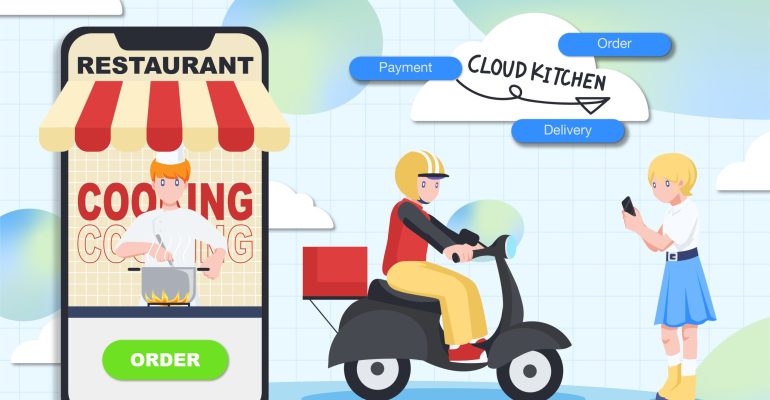Cloud Kitchen, the new trend of restaurants in the future?

Cloud Kitchen, the new trend of restaurants in the future?
Cloud Kitchen: A transformative force in the food industry
Technology is changing the way we eat, and cloud kitchens are at the forefront of this change. Cloud kitchens, also known as ghost kitchens or virtual kitchens, are a new type of food service model that operates exclusively through online orders and delivery. Unlike traditional restaurants, cloud kitchens don’t have a dining area, and their kitchens are optimized for takeout and delivery.
In recent years, cloud kitchens have exploded in popularity, driven by the rise of food delivery apps like Uber Eats, Grubhub, and DoorDash. According to a report by Euromonitor International, the global food delivery market is expected to grow by 11% annually, reaching $200 billion by 2025. This growth is creating a huge opportunity for cloud kitchens, which offer a more efficient and cost-effective way to operate a food business.
The technology behind cloud kitchens
Cloud kitchens rely heavily on technology to streamline operations and improve efficiency. They use a range of tools and software to manage orders, track inventory, and optimize delivery routes. One of the key technologies used by cloud kitchens is the cloud itself. By storing data and applications on remote servers, cloud kitchens can access their data and software from anywhere, allowing them to operate multiple kitchens from a single location.
Another key technology used by cloud kitchens is kitchen automation. This includes everything from automated cooking equipment to robotic systems that can prepare, package, and deliver food. Automation not only speeds up the cooking process, but it also reduces the need for human labor, making cloud kitchens more cost-effective.
In addition to kitchen automation, cloud kitchens also use data analytics to improve their operations. By analyzing customer data, they can identify popular dishes, optimize menu offerings, and predict demand. They can also use data to improve delivery times and reduce food waste.
The future of food trends
Cloud kitchens are not just changing the way we order and receive food; they are also influencing the types of food that are popular. As more people order food online, they are looking for dishes that travel well and taste great even after being delivered. This has led to the rise of delivery-friendly foods, such as pizza, burgers, and sushi rolls.
However, cloud kitchens are also creating opportunities for more innovative and experimental food offerings. Because cloud kitchens don’t have to worry about the costs of operating a traditional restaurant, they can afford to take risks and experiment with new dishes. This has led to the rise of ghost kitchen concepts, such as vegan and plant-based kitchens, healthy meal prep services, and gourmet sandwich shops.
In addition to creating new food trends, cloud kitchens are also changing the way we think about food sustainability. Because cloud kitchens don’t have to maintain a dining room or storefront, they can operate in smaller spaces and use fewer resources. This means they can reduce their carbon footprint and minimize waste.
Cloud kitchens also offer an opportunity for food entrepreneurs to start their own businesses without the high startup costs of a traditional restaurant. By renting space in a shared kitchen facility, entrepreneurs can test new food concepts without having to invest in expensive equipment and overhead costs. This has led to a rise in food incubator programs, such as Kitchen United and Food-X, which provide shared kitchen spaces, business support, and mentorship for food startups.
Conclusion
Cloud kitchens are a disruptive force in the food industry, transforming the way we order, deliver, and consume food. They offer a more efficient and cost-effective way
to operate a food business, and their use of technology is making it easier for entrepreneurs to start new food concepts. As the food delivery market continues to grow,
cloud kitchens are likely to become even more popular, creating new food trends and changing the way we think about food sustainability.
